What types of braces are there?
|
In this article I would like to share with you my knowledge andexperience about advantages and disadvantages of dental braces. Since an orthodontist has an arsenal of various types of braces. At present, different companies all over the world develop and manufacture the orthodontic products and, first of all, the braces; offering new kinds, improved design, creative shapes. But in spite of this, the classical types of braces remained popular. So it is always hard for a patient to make a decision what kind of braces to choose: more invisible, more expensive, newer, or cheaper? |
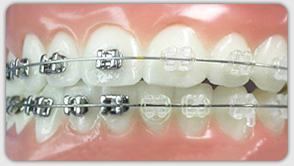 |
|
Metal braces– are the most widely used type of dental braces in the world. Stainless steel or steel with gilding in combination with nickel titanium are used for their production.The last two kinds are used in cases of allergic reaction to traditional alloy. The form and the design depend on the company-manufacturer and the kind of braces. Advantages: metal braces are more affordable than any other types of dental braces. They are more durable and practical during the whole course of treatment. Earlier, they marked out such advantage as less friction of an arch wire in the bracket groove than, for example, in ceramic ones, which influences on the period of orthodontic treatment. But designers keep their eyes open and now, the market of orthodontology offers Self Ligating braces or Damon braces (with minimal friction), ceramic braces with metal groove, and ceramic braces with open groove. Disadvantages: perhaps, that they are not elegant but it is rather doubt. Some people have different kinds of piercing on face and on the body and the view of steel does not confuse them. Besides, there are alternative, interesting forms of metal braces: hearts, flowers and so on. And it is possible to make metal braces colored or non by means of the colored elastic ligatures. |
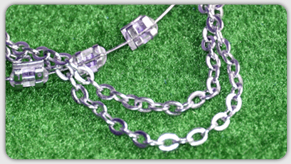 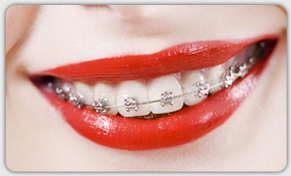 |
|
Ceramic braces – are also known as clear braces. They can be monocrystalline and polycrystalline ones. Monocrystallline ceramic braces are also called as the “sapphire” braces. Polycrystalline braces can be both vestibular (attached on the front surface of a tooth) and lingual ones (attached on the inner surface of a tooth). However the lingual ceramic braces are rarely used in practice. Advantages: they are elegant and less noticeable, also look more natural than the metal braces, at the same time they are highly durable. Monocrystalline structure makes the clear braces translucent in comparison with all the other ceramic braces. Disadvantages: despite of the elegant look of these braces some elements remain metal and as a result, they are noticeable on the teeth (an ark wire, for example). The ceramic braces without steel groove have increased friction of the arc wire, which prolong the period of treatment. Earlier they also marked out the difficulties when debonding (the removal of the bonded brackets), but in the process of the “brace evolution” the shortage was removed. |
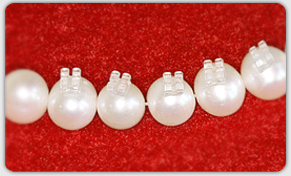 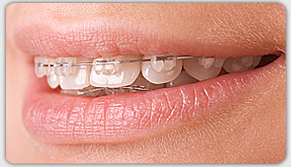 |
|
Plastic braces are made of a composite material. They are similar to ceramic ones and have the same advantages and disadvantages, but we can distinguish a few more: they are brittle and can change the color. But I think that the producers of “Ormko” company would debate on with me, as their plastic braces are made of high quality composite. |
|
|
Lingual braces.Year by year these braces become more called-for with popularization of the orthodontic treatment among the adults. But it is their “second birth”. The first wave of interest to lingual braces goes back to the United States of the mid-70th and the early 80th of XX century. But it runs out fast because of their difficulties in use and hard adaptation for the patients: diction abnormality, tongue injury, difficulties in teeth cleaning. With the development of the technologies as well as with the increased aesthetical demand the braces recover their popularity again. At present time there is a trend of lingual orthodontology with the official association of lingual orthodontists. Advantages:their absolute invisibility on teeth. They can be seen only with the wide opened mouth. Disadvantages: the period of adaptation to the braces can be prolonged; the special skills of teeth cleaning are needed; traditional corrections are longer (as a rule, every moth an orthodontic patient ought to come to the doctor, every manipulation takes 15-30 min, in case of the fixed lingual braces it takes 20-60 min); the lingual braces could cause the difficulties in speech;and when a brace debonded it takes more time to reposition it. I hope that the given information would be useful for you in selection of the lingual braces. And the only thing that should be noted is that the braces’ esthetics does not influence the treatment results: in the doctor’s skillful hands it doesn’t matter how visible the braces are. |
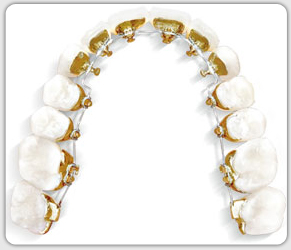 |
Wishing you good luck,
Antonia Fartushna

